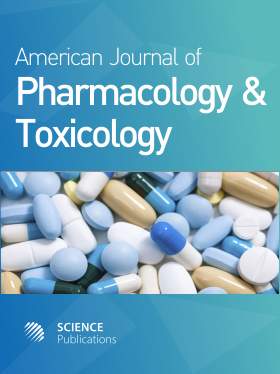Concentration-Effect, Incidence and Mechanism of Nevirapine Hepatotoxicity
- 1 University of Port Harcourt, Nigeria
Abstract
Nevirapine is a dipyridozepinone non nucleoside reverse transcriptase inhibitor approved for use in HIV-infected patients. Its efficacy has been well demonstrated in numerous clinical trials. It has activity against HIV-1 but does not have significant activity against HIV-2 or other retroviruses. Nevirapine is used as one of the components of highly active antiretroviral therapy in HIV patients and in the prevention of mother to child transmission of HIV. Reports have linked nevirapine containing highly active antiretroviral therapy with hepatotoxicity which is of great clinical concern. In this study, a comprehensive literature review on reports (previous and present) of nevirapine associated hepatotoxicity in experimental animal studies and humans (case reports, clinical trials and cohorts’ studies) was performed. The relationships between length of nevirapine therapy, plasma concentration and nevirapine associated hepatotoxicity were evaluated. The possible mechanisms of nevirapine associated hepatotoxicity were also reviewed. Analysis of data from various clinical trials, cohort and other studies involving patients taking nevirapine containing antiretroviral therapy showed that nevirapine could be hepatotoxic. Nevirapine associated hepatotoxicity is of two distinguished types the early immune mediated hypersensitivity reaction which develops within 18 weeks and the late onset hepatotoxicity which occurs after18 weeks of nevirapine therapy. Most nevirapine associated hepatotoxicity manifested as hepatitis, jaundice, cholestatic hepatitis, hepatic necrosis and fulminant hepatic failure with rare deaths. This hepatotoxicity is associated with elevation in levels of aspartate aminotransferase, alanine aminotransferase, alkaline phosphatase and other biomarkers of liver function. Liver enlargement and necrosis which occurred in centrilobular and mediolobular region marked with inflammations are features of nevirapine associated hepatotoxicity. Nevirapine hepatotoxicity might have correlation with length of therapy but with discrepancy in reports on the relationship between nevirapine hepatotoxicity and nevirapine plasma concentration. The mechanism of nevirapine associated hepatotoxicity is not well understood but could be attributed to direct toxic effect on the liver, mitochondrial dysfunction in hepatocytes, hypersensitivity reaction and stress induced by nevirapine. It is recommended that liver function should be evaluation for HIV patients eligible for nevirapine containing highly active antiretroviral therapy.
DOI: https://doi.org/10.3844/ajptsp.2013.20.30

- 4,090 Views
- 4,340 Downloads
- 5 Citations
Download
Keywords
- Nevirapine
- Toxicity
- Mechanism
- Plasma Concentration
- Liver
